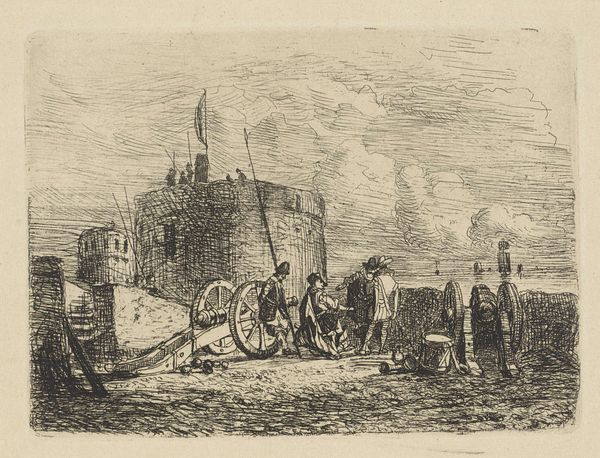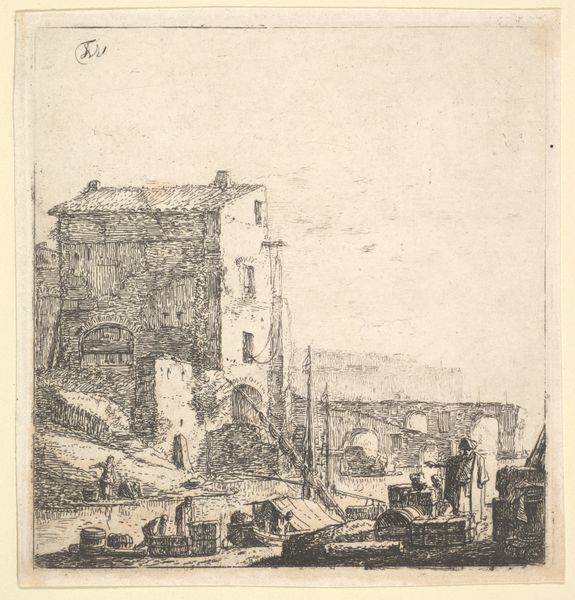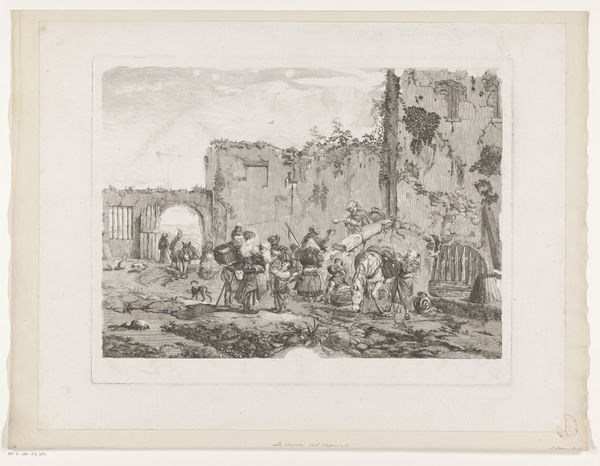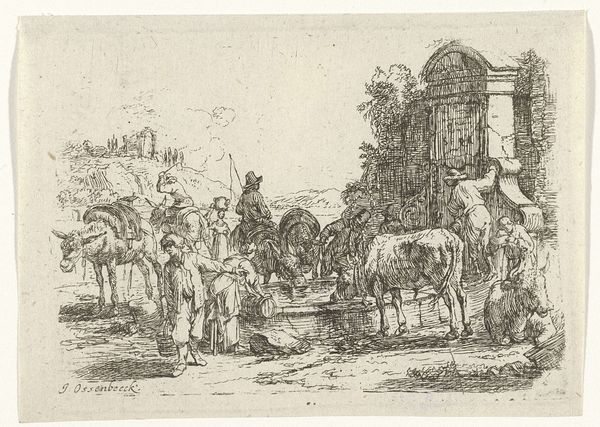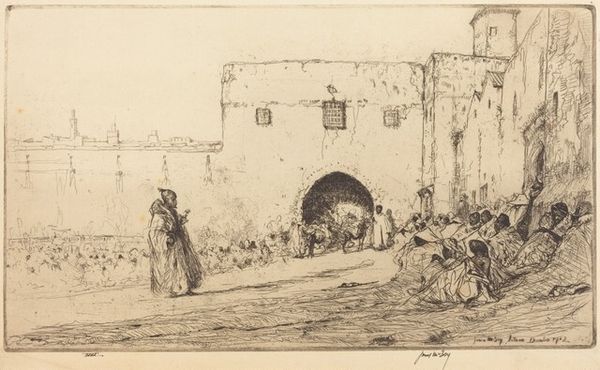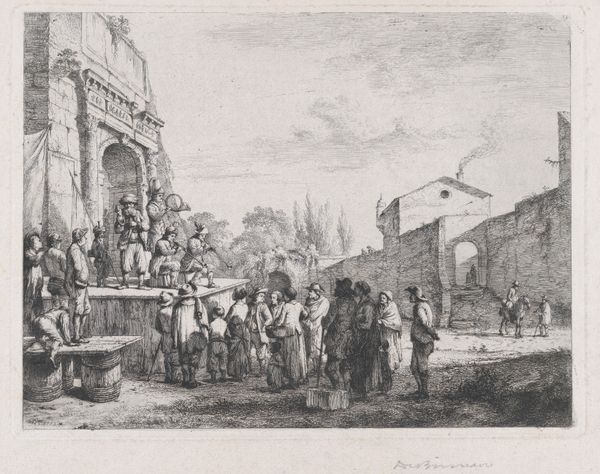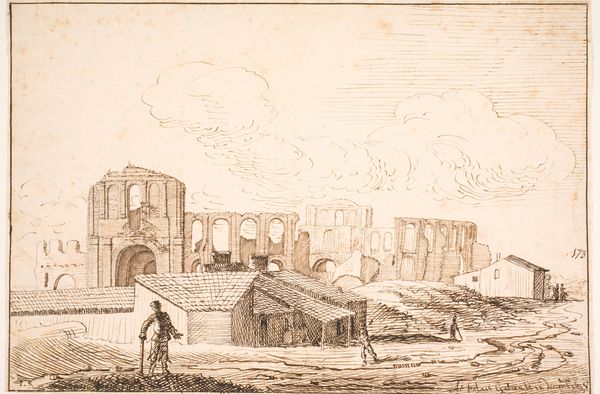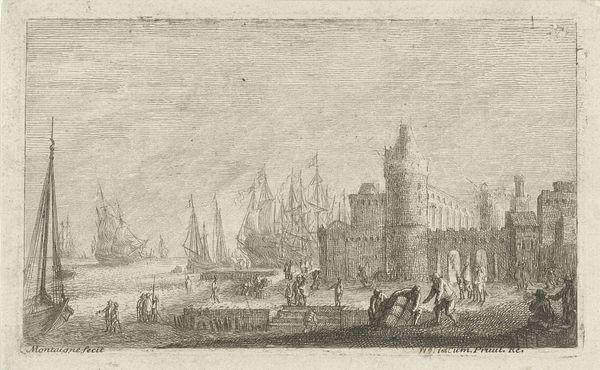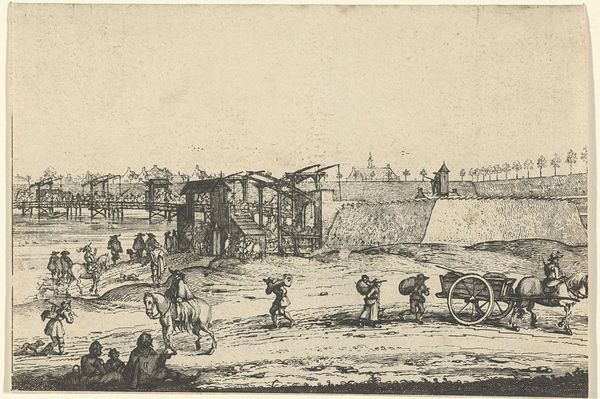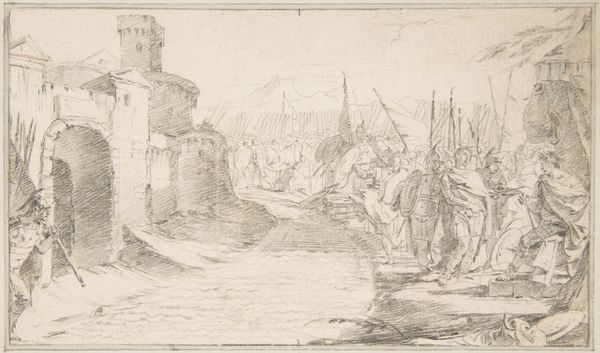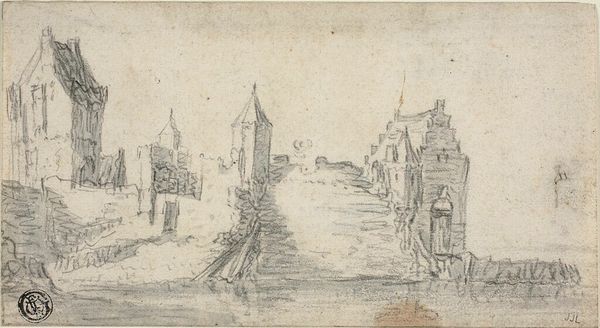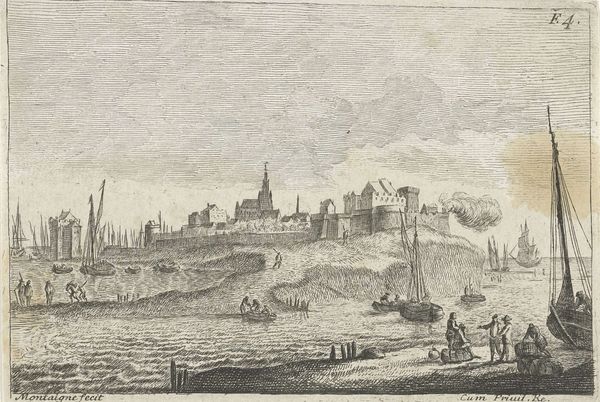
drawing, print, engraving
#
drawing
# print
#
pen sketch
#
pencil sketch
#
landscape
#
figuration
#
engraving
Dimensions: height 95 mm, width 130 mm
Copyright: Rijks Museum: Open Domain
Editor: Here we have Henri Adolphe Schaep's "Soldaten bij een kustbatterij," or "Soldiers at a coastal battery," made sometime between 1841 and 1870. It looks like an engraving. There’s a worn quality to the paper and the linework is very fine, almost scratchy. What catches your eye in this image? Curator: I see an active documentation of labor, here in the service of military readiness. This print isn’t just depicting a scene; it’s recording the physical processes and material conditions that make defense possible. Consider the cannons themselves – forged iron, requiring skilled labor, considerable resources. Look at the arrangement: men working and seemingly relaxing amidst the tools of war. Editor: It's interesting that you focus on the physical act of labor. The cannons appear to be the most important elements in the image and dominate the landscape, at least for me. Do you see any potential statement about the social standing of the people working at this coastal battery? Curator: Exactly! We might also consider who had access to such technologies and who bore the risks of this military outpost. The artist shows men resting, which emphasizes an appreciation for their working conditions, perhaps providing insight to social differences during its time, considering the means by which the cannons were made and acquired. The artist certainly had a unique access and interest in portraying the conditions of labor. Editor: That makes me think about how different art and depictions of war became as photography became more accessible. This feels very immediate and less polished. Curator: Absolutely. And thinking about that material process of production also invites us to examine the purpose, class dynamics and lived realities reflected by the production. How are we implicated in these long and often invisible chains of production, consumption, and waste? Editor: It's insightful to examine art with this materialist lens! I will surely ask more questions and analyze through this perspective more often!
Comments
No comments
Be the first to comment and join the conversation on the ultimate creative platform.
